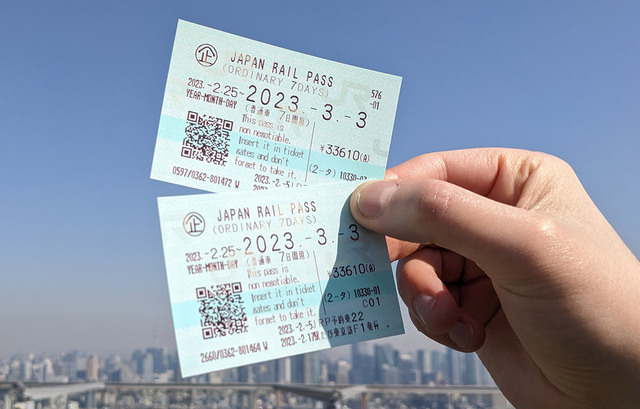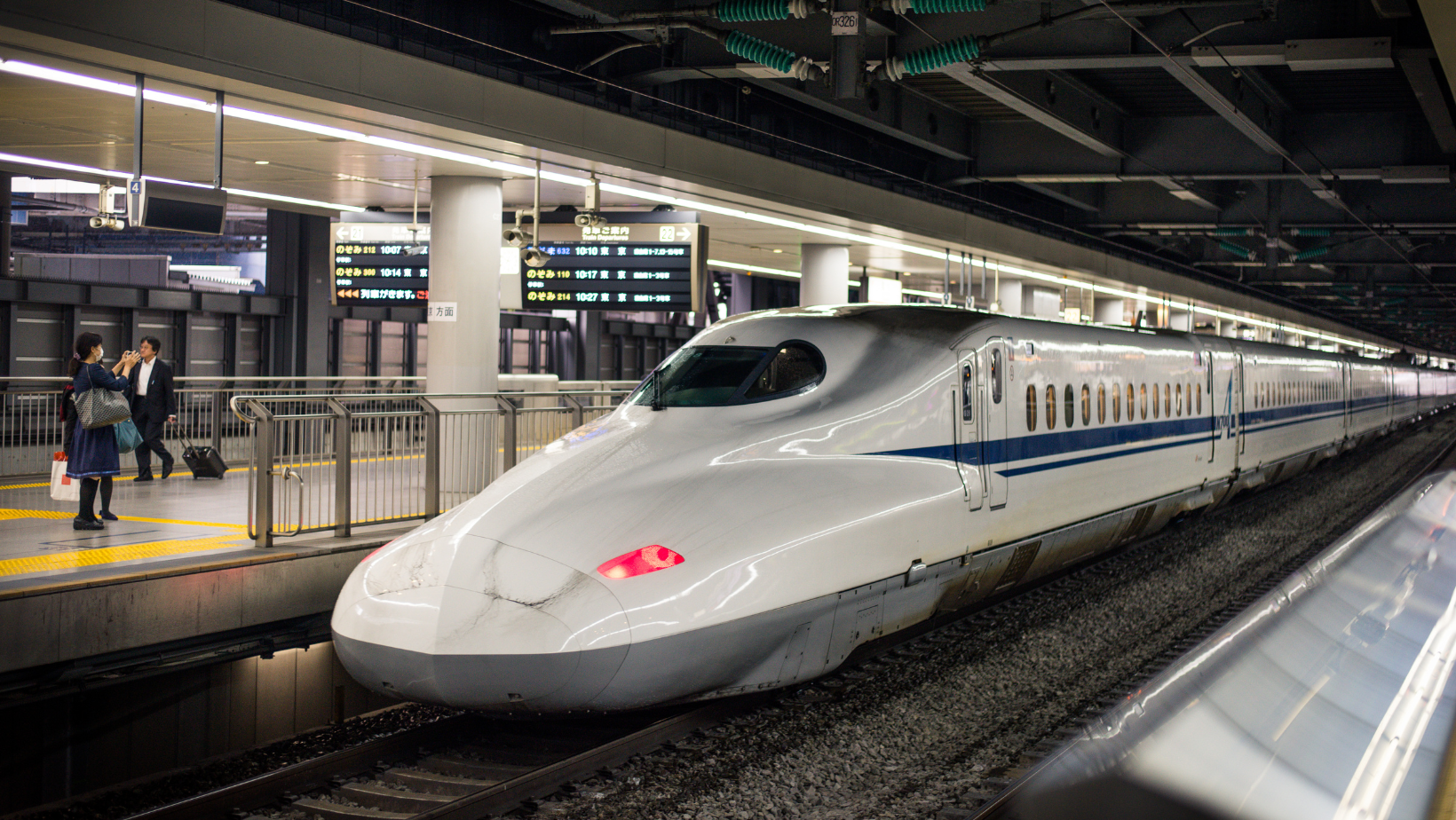Understanding What the JR Pass Covers and How to Use It
When planning your trip to Japan, navigating the country’s extensive train and subway system is one of the biggest considerations. Two of the most popular options for tourists are the JR Pass and the Suica card. But which one is right for your trip? Should you invest in the JR Pass for long-distance travel, or will a Suica card suffice for your local transportation needs?
In this guide, we’ll break down the differences between the JR Pass and the Suica card, help you understand what the JR Pass covers, and give you tips on how to use both effectively during your journey. By the end, you’ll have a clear idea of which option is the best fit for your travel itinerary, ensuring you get the most value out of your time in Japan.
Let’s dive in and find out which is the best option for your Japan adventure!

What is the JR Pass?
The Japan Rail Pass, commonly known as the JR Pass, is a special ticket available exclusively to foreign tourists traveling in Japan. This pass offers unlimited travel on most of the Japan Rail (JR) network, which includes Shinkansen bullet trains, limited express trains, and local JR trains, making it perfect for covering long distances across the country.
Available in 7-day, 14-day, and 21-day options, the JR Pass is a cost-effective way to travel between cities like Tokyo, Kyoto, Osaka, and beyond. The pass must be purchased before arriving in Japan, and it’s ideal for those planning to explore multiple regions during their stay.
Key benefits of the JR Pass include:
- Unlimited rides on JR-operated trains (including the famous Shinkansen)
- Access to JR buses and ferries
- The ability to reserve seats for free on certain trains
However, the JR Pass is best suited for those traveling between cities and regions, as it does not cover all local subways and non-JR train lines.
Now that you know the basics, let’s take a closer look at the Suica card and how it differs from the JR Pass.

What is the Suica Card?
The Suica card is a rechargeable smart card used for transportation across Japan’s extensive network of local trains, subways, and buses. It’s incredibly convenient for navigating within cities like Tokyo, Osaka, and Kyoto, as it works on most public transport systems. You can also use Suica for small purchases at vending machines, convenience stores, and even some restaurants.
Unlike the JR Pass, which is a one-time purchase for a set duration, the Suica card operates on a pay-as-you-go basis. You load money onto the card and tap in and out at train stations and buses. This makes Suica the perfect option for travelers who plan to stay primarily in one city or use public transportation for short-distance trips.
Key features of the Suica card include:
- Ease of use on most public transport systems across major cities
- Ability to be recharged at any station
- Use for purchases at various shops and vending machines
- No need to buy individual tickets for each trip
The Suica card is ideal for those traveling within a single city or region, offering flexibility and convenience for everyday transportation. However, it’s important to note that the Suica card doesn’t cover long-distance trains like the Shinkansen, making it better suited for local travel.
Now that we’ve covered both options, let’s explore the key differences between the JR Pass and Suica card to help you decide which one is right for your trip.
Differences Between the JR Pass and Suica Card
Choosing between the JR Pass and the Suica card depends on your travel plans, as both serve different purposes. To help you make the right decision, here’s a breakdown of the key differences between the two:
1. Coverage
- JR Pass: Primarily covers long-distance travel on JR-operated trains, including the Shinkansen, limited express trains, and some JR buses and ferries. It’s ideal for traveling between cities like Tokyo, Kyoto, Osaka, and more.
- Suica Card: Works on most local trains, subways, and buses in cities like Tokyo, Osaka, and Kyoto, but does not cover long-distance JR trains or the Shinkansen.
2. Cost
- JR Pass: Requires a one-time payment and is available in 7-day, 14-day, or 21-day options. It offers unlimited travel on JR trains for the duration of your pass, making it cost-effective for travelers covering large distances.
- Suica Card: Operates on a pay-as-you-go basis, allowing you to top up the card with as much credit as you need. It’s more affordable for travelers sticking to local transportation within cities.
3. Type of Travel
- JR Pass: Best for those traveling between cities, especially on the Shinkansen, as it allows unlimited access to JR-operated lines. It’s perfect for tourists planning to visit multiple regions across Japan.
- Suica Card: Ideal for local, city-based travel. If you plan to stay within one or two cities and use subways and buses frequently, Suica is more convenient for quick, short trips.
4. Convenience
- JR Pass: While the JR Pass is convenient for long-distance travel, it requires seat reservations for some trains and isn’t always accepted on city subways or non-JR lines.
- Suica Card: Extremely easy to use for tap-and-go convenience on local transit systems. It eliminates the need to buy tickets for each journey and can be used across various non-JR lines and buses.
5. Flexibility
- JR Pass: Offers flexibility for those wanting to explore multiple regions, but is less practical if you’re only traveling within one city.
- Suica Card: Offers greater flexibility for local travel and daily commutes, especially if your trip is centered around one or two cities.
Now that you know the key differences, let’s explore when to choose a JR Pass or a Suica card based on your travel itinerary.
Should You Get a JR Pass or a Suica Card?
The decision between getting a JR Pass or a Suica card largely depends on your travel itinerary and how much ground you plan to cover in Japan. Let’s break down the scenarios where each option makes the most sense:
When to Choose the JR Pass:
- Long-distance travel between cities: If your trip involves traveling between major cities like Tokyo, Kyoto, Osaka, or even further to places like Hokkaido or Hiroshima, the JR Pass offers great value. The Shinkansen (bullet trains) are fast, efficient, and expensive without the JR Pass, so this pass can save you a lot of money.
- Multiple Shinkansen rides: The JR Pass is most cost-effective when you’re taking multiple Shinkansen rides, as individual tickets for long-distance travel can add up quickly.
- Regional exploration: If you’re planning to explore several regions in Japan within a short period (e.g., 7-14 days), the JR Pass will allow you to do so without worrying about the costs of each journey.
When to Choose the Suica Card:
- City-based travel: If your trip is mainly focused on one or two cities—like Tokyo or Osaka—the Suica card is the more practical option. It allows you to move easily through local train, subway, and bus systems without purchasing tickets for each trip.
- Shorter trips: For short stays or trips that don’t involve long-distance travel, the Suica card offers convenience without the upfront cost of the JR Pass.
- Flexibility for local commutes: The Suica card is perfect for travelers who want to explore local neighborhoods, take the occasional bus ride, or even make small purchases at convenience stores. It’s rechargeable and can be used across Japan’s major cities.
In many cases, a combination of both the JR Pass for long-distance travel and the Suica card for local transport is ideal. For example, you could use the JR Pass for your trips between cities and the Suica card to navigate within those cities.
Now that you know which option is best for you, let’s clarify an important question—Does the JR Pass cover all subways and trains?
Does the JR Pass Cover All Subways and Trains?
A common misconception is that the JR Pass covers all trains and subways across Japan. While the JR Pass is an excellent option for traveling between cities on JR-operated lines, it does not cover all subways or non-JR trains. Here’s a breakdown of what the JR Pass covers and what it doesn’t:
What the JR Pass Covers:
- JR-operated trains: This includes the Shinkansen (bullet trains), JR local trains, limited express trains, and some JR buses and ferries. The pass allows you to travel across the country on JR-operated routes, making it highly valuable for long-distance travelers.
- Intercity travel: If you’re traveling from Tokyo to Kyoto or Osaka to Hiroshima, the JR Pass is your best bet for unlimited rides on JR trains, including the famous Shinkansen.
- Some regional JR lines: The JR Pass also covers regional JR lines, such as the JR Yamanote Line in Tokyo, which loops around the city and connects key areas like Shibuya, Shinjuku, and Tokyo Station.
What the JR Pass Does Not Cover:
- Non-JR-operated subways and trains: The JR Pass does not cover city subways like the Tokyo Metro, Toei Subway, or Osaka Metro. You’ll need a Suica card or individual tickets to access these.
- Private railways: Many cities have private railway companies that operate outside the JR network. For example, the Keihan Line in Kyoto or the Hankyu Line in Osaka are not covered by the JR Pass.
- Buses and trams not operated by JR: Local buses and trams, especially in smaller towns or non-JR-operated areas, will not accept the JR Pass.
In summary, the JR Pass is fantastic for long-distance and regional JR train travel, but for getting around within cities or on private railways, you’ll still need a Suica card or local transit tickets.
Pro Tip: Even if you have a JR Pass, it’s a good idea to keep a Suica card handy for local travel and for convenience when you’re hopping on city subways or buses that aren’t covered by the JR Pass.
Now that we’ve clarified what the JR Pass covers, let’s talk about how you can maximize your trip by using both the JR Pass and Suica card together!
When to Combine the JR Pass and Suica Card
For many travelers, the best approach is to use both the JR Pass and Suica card to maximize convenience and savings. Each card serves a different purpose, and combining them ensures you have the flexibility to navigate both long-distance journeys and local commutes seamlessly.
When to Use the JR Pass:
- Traveling between cities: If you’re moving between major destinations like Tokyo, Kyoto, Osaka, or even further regions like Hokkaido or Kyushu, the JR Pass is your go-to. It covers the Shinkansen and JR-operated trains, allowing you to travel comfortably and cost-effectively across Japan.
- Long-distance travel: Whether it’s the high-speed Shinkansen or regional JR trains, the JR Pass will cover your long-distance trips without worrying about individual ticket costs.
When to Use the Suica Card:
- Navigating local transport: In cities like Tokyo, Kyoto, and Osaka, the Suica card is perfect for hopping on subways, local trains, and buses that aren’t covered by the JR Pass. It offers a tap-and-go convenience and can even be used for small purchases at stores and vending machines.
- City exploration: If you’re sticking to a single city for a few days, the Suica card is the most convenient option for getting around. It saves you time and hassle since you won’t need to buy separate tickets for every ride.
Maximizing Convenience:
By combining the JR Pass for intercity travel and the Suica card for local commutes, you’ll be able to navigate Japan’s transportation system effortlessly. This combo ensures you’re covered for both long-distance and short-distance journeys, without the need to worry about separate tickets or finding exact change for every ride.
Pro Tip: Use the JR Pass for major trips between cities, and keep your Suica card charged for exploring local neighborhoods, shopping, and dining.
Conclusion: JR Pass, Suica, or Private Car—Which is Right for You?
Choosing between the JR Pass and Suica card depends on your travel plans. If you’re planning to explore multiple cities and take long-distance trips on Japan’s iconic Shinkansen, the JR Pass offers unbeatable value. For those sticking to one or two cities and focusing on local travel, the Suica card is the most convenient option for everyday transportation within urban areas.
For many travelers, a combination of both is ideal—use the JR Pass for long-distance journeys and the Suica card for quick, local trips. However, if you’re looking for a more tailored experience, consider booking a private car for ultimate comfort and convenience. A private car eliminates the hassle of navigating stations or adhering to train schedules, offering a door-to-door service that allows you to explore at your own pace. This option is especially useful for families, those with luggage, or anyone who wants a more personalized travel experience.
Need help planning your Japan trip? Our services, including private car tours, hotel bookings, and airline tickets, ensure a stress-free and enjoyable journey. Whether you’re hopping between cities, exploring locally, or seeking the ease of a private car, we’re here to assist with all your travel needs.



